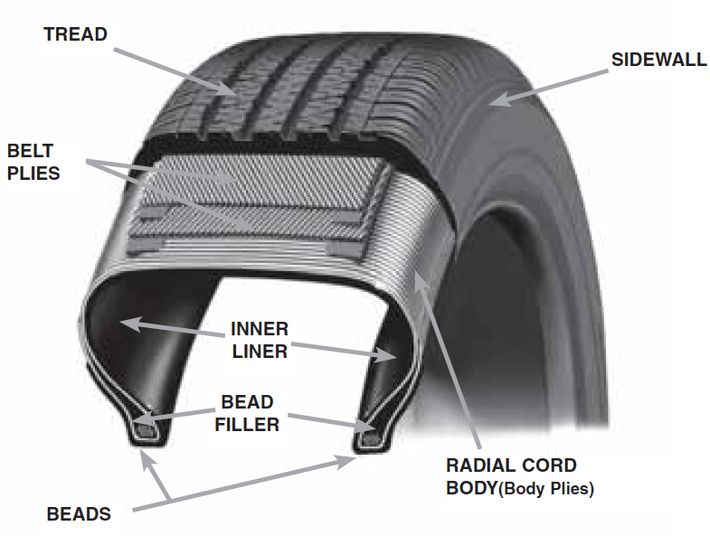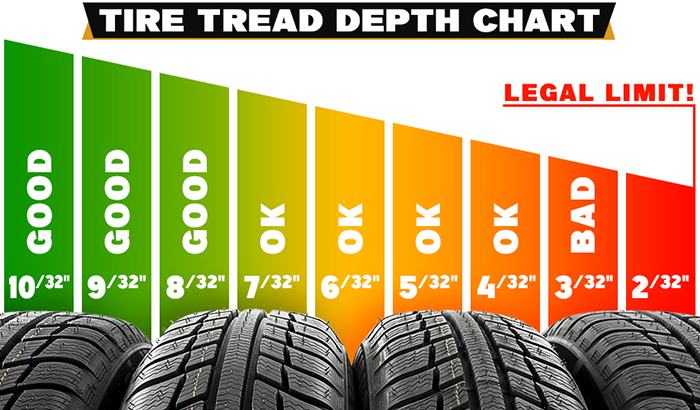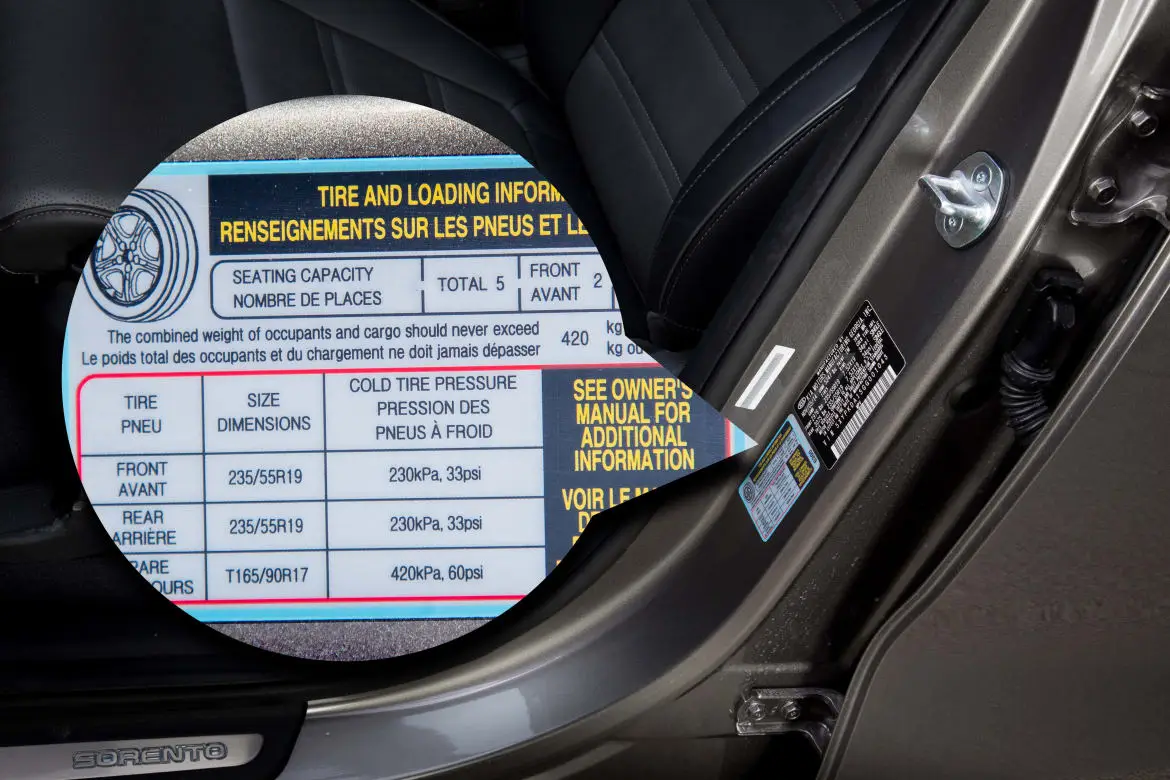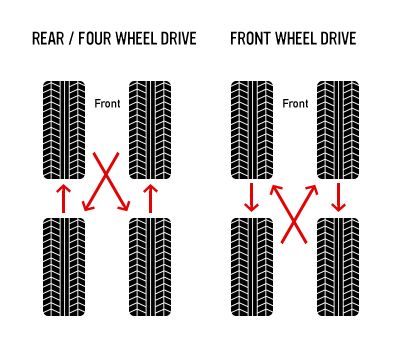Tires
General Information
Every car has four tires, most commonly made out of rubber. Tires are inflated around the rim of the wheel and make contact with the road. Compressed air goes into the tire inflate valve and pressurizes the tire from inside the inner liner.

Anatomy of a Tire
The tread of a tire is responsible for traction and grip while driving. Over time, the tire will lose tread, leading to a decrease in traction, especially in bad weather. A tread depth scale is used to determine the wear of the tread.

Tire Tread Scale
When tires are underinflated, they can lead to worse gas mileage, decreased traction, increased braking distance, and premature wear. Every car has its own tire PSI rating, and this can be found on the inside of the driver side door or in the owner's manual. Typically, for every 10°F change in outside air temperature, tire pressure will change 1 PSI (up with + temp change and down with - change).

Tire PSI Sticker
Rotation
Tire rotation is a practice to ensure even wear on a car's tires. Depending on the car's drivetrain, different wheels will wear faster than others, therefore, the tires must switch positions so that all four tires wear equally over time. But no matter which drivetrain, a car's tires must be rotated according to the pattern below.
- FWD - front tires experience more wear
- RWD - more balanced wear (slighty more in the rear)
- AWD/4WD - more balanced wear (slightly more in the front)

Tire Rotation